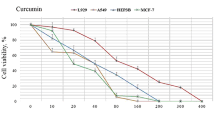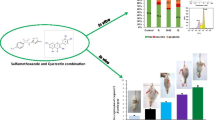Abstract
The invasion of cancer cells is an important and characteristic step of cancer metastasis. We have found that coffee extract possesses anti-invasive activity. In the present study, the effects of coffee components on the invasion of hepatoma (AH109A) cells were investigated using in vitro and ex vivo invasion assay systems. Trigonelline suppressed the hepatoma cell invasion when added to experimental media, while it showed little effect on the hepatoma proliferation at the same concentrations. Sera obtained from rats orally given the test compounds, i.e.,chlorogenic acid, caffeic acid, quinic acid, and trigonelline, inhibited the invasion of AH109A, indicating their absorbability from the gut and their bioavailability in the body. Caffeic acid, quinic acid, and trigonelline suppressed reactive oxygen species-potentiated invasive capacity when added to experimental media, whereas chlorogenic acid failed to do so. However, sera obtained from rats which had orally received the four test compounds including chlorogenic acid suppressed the radical-induced increase in the AH109A invasion, indicating that chlorogenic acid might act after its hydrolysis into caffeic and quinic acids during absorption from the gut. These results also suggest that the antioxidative properties of the food factors and of their intracorporeal metabolites may play an important role in their anti-invasive actions.
Access this chapter
Tax calculation will be finalised at checkout
Purchases are for personal use only
Preview
Unable to display preview. Download preview PDF.
Similar content being viewed by others
References
Yagasaki, K., Miura, Y., Okauchi, R., and Furuse, T.: Inhibitory effects of chlorogenic acid and its related compounds on the invasion of hepatoma cells in culture. Cytotechnology 33 (2000), 229–235.
Zhang, G., Miura, Y., and Yagasaki, K.: Effects of green, oolong and black teas and related components on the proliferation and invasion of hepatoma cells in culture. Cytotechnology 31 (1999), 37–44.
Miura, Y., Furuse, T., and Yagasaki, K.: Inhibitory effect of serum from rats administered with coffee on the proliferation and invasion of rat ascites hepatoma cells. Cytotechnology 25 (1997), 221–225.
Kozuki, Y., Miura, Y., and Yagasaki, K.: Inhibitory effects of carotenoids on the invasion of rat ascites hepatoma cells in culture. Cancer Len. 151 (2000), 111–115.
Zhang, G., Miura, Y., and Yagasaki, K.: Suppression of adhesion and invasion of hepatoma cells in culture by tea compounds through antioxidative activity. Cancer Lett. 159 (2000), 169–173.
Chan, W.S., Wen, P.-C., and Chiang, H.C.: Structure-activity relationship of caffeic acid analogues on xanthine oxidase inhibition. Anticancer Res. 15 (1995), 703–708.
Castelluccio, C., Paganga, G., Melikian, N., Bolwell, G.P., Pridham, J., and Sampson, J.: Antioxidant potential of intermediates in phenylpropanoid metabolism in higher plants. FEBS Lett. 368 (1995), 188–192.
Czok, G., Walter, W., Knoche, K., and Degener, H.: Über die Resorbierbarkeit von Chlorogensäure durch die Ratte. Z. Ernithrungswiss. 13 (1974), 108–112.
Booth, A.N., Robbins, D.J., Masri, M.S., and DeEds, F.: Excretion of catechol after ingestion of quinic and shilâmic acids. Nature 187 (1960), 691.
Indahl, S.R., and Scheline, R.R.: Quinic acid aromatization in the rat. urinary hippuric acid and catechol excretion following the singular or repeated administration of quinic acid. Xenobiotica 3, 549–556, 1973.
Author information
Authors and Affiliations
Editor information
Editors and Affiliations
Rights and permissions
Copyright information
© 2002 Springer Science+Business Media Dordrecht
About this chapter
Cite this chapter
Yagasaki, K., Okauchi, R., Miura, Y. (2002). Bioavailability and Inhibitory Actions of Trigonelline, Chlorogenic Acid and Related Compounds Against Hepatoma Cell Invasion in Culture and Their Modes of Actions. In: Shirahata, S., Teruya, K., Katakura, Y. (eds) Animal Cell Technology: Basic & Applied Aspects. Animal Cell Technology: Basic & Applied Aspects, vol 12. Springer, Dordrecht. https://doi.org/10.1007/978-94-017-0728-2_73
Download citation
DOI: https://doi.org/10.1007/978-94-017-0728-2_73
Publisher Name: Springer, Dordrecht
Print ISBN: 978-90-481-5934-5
Online ISBN: 978-94-017-0728-2
eBook Packages: Springer Book Archive




